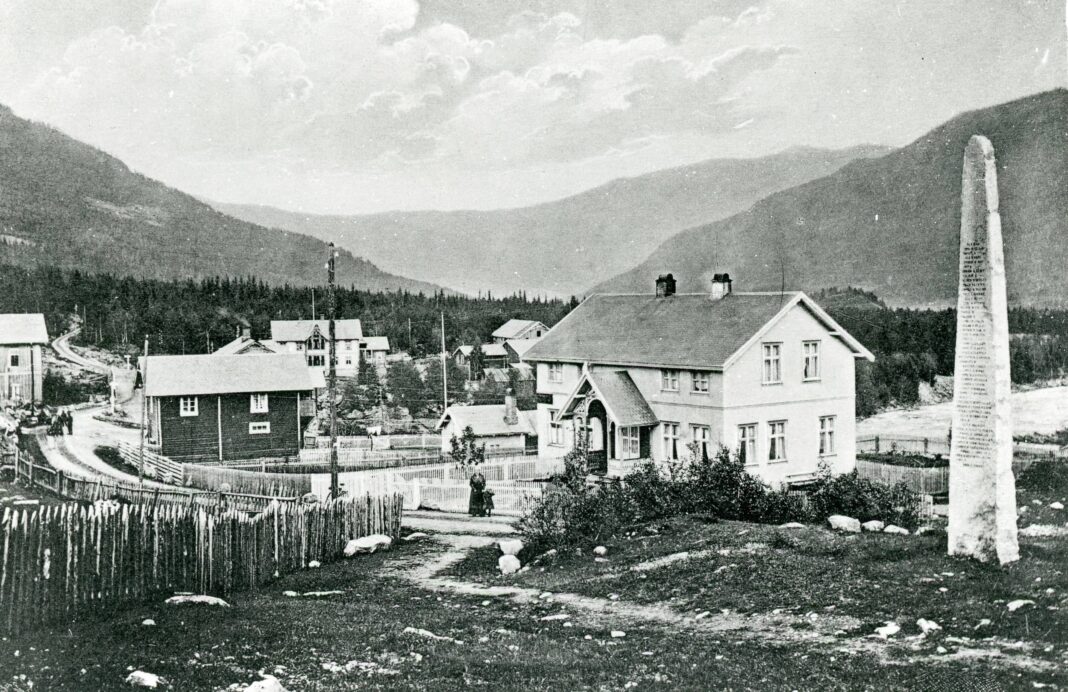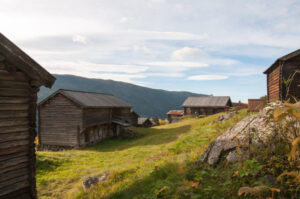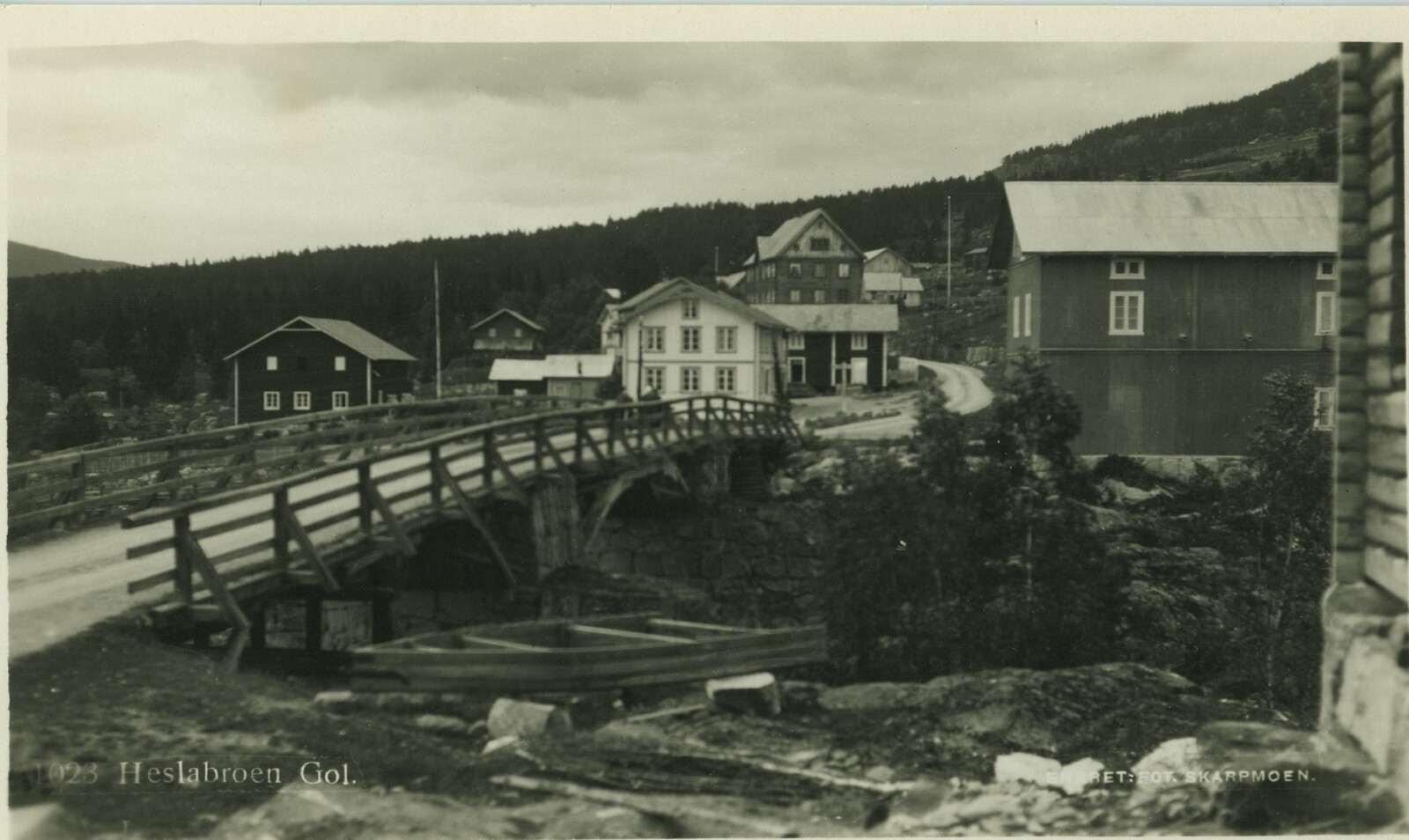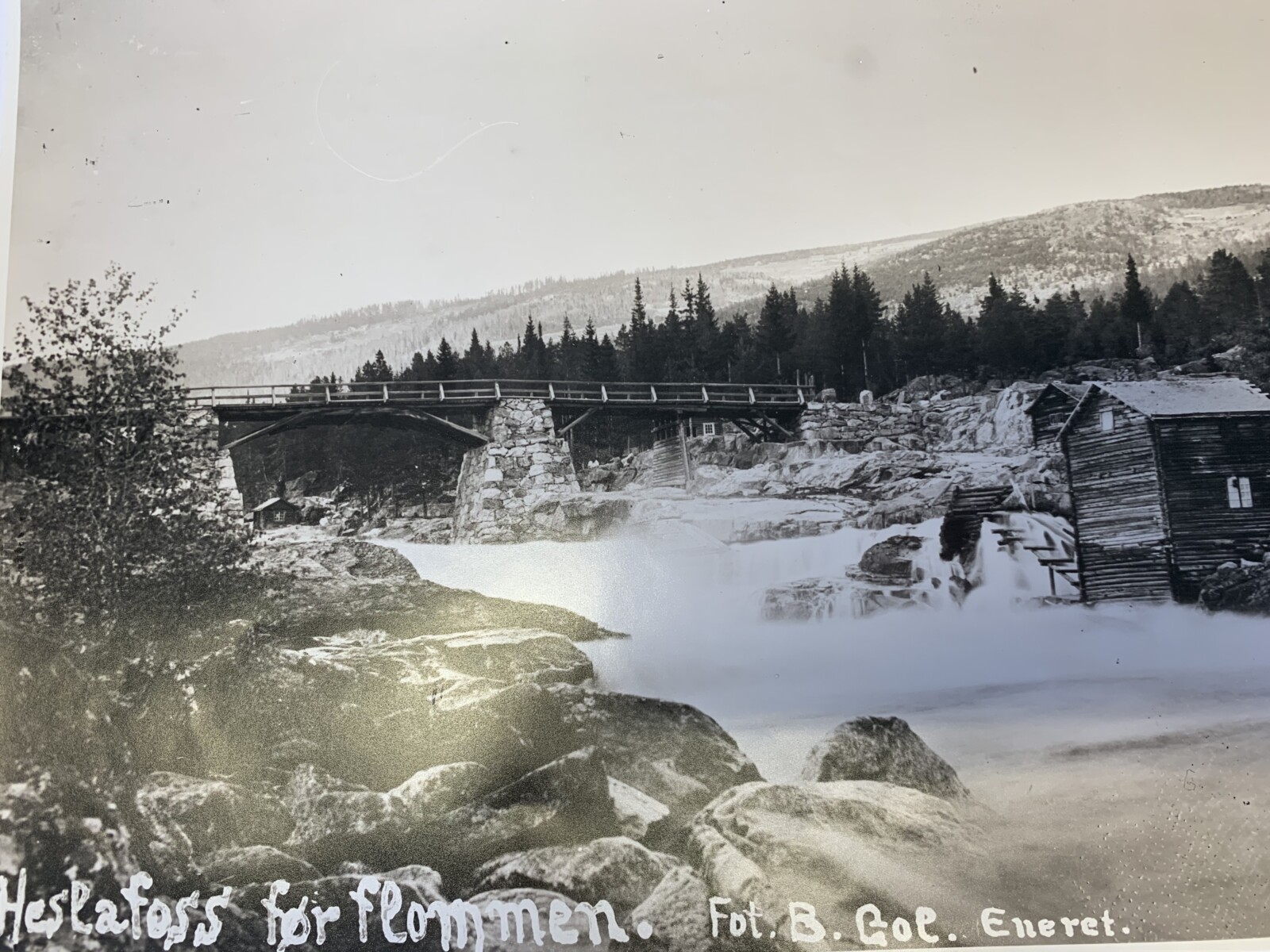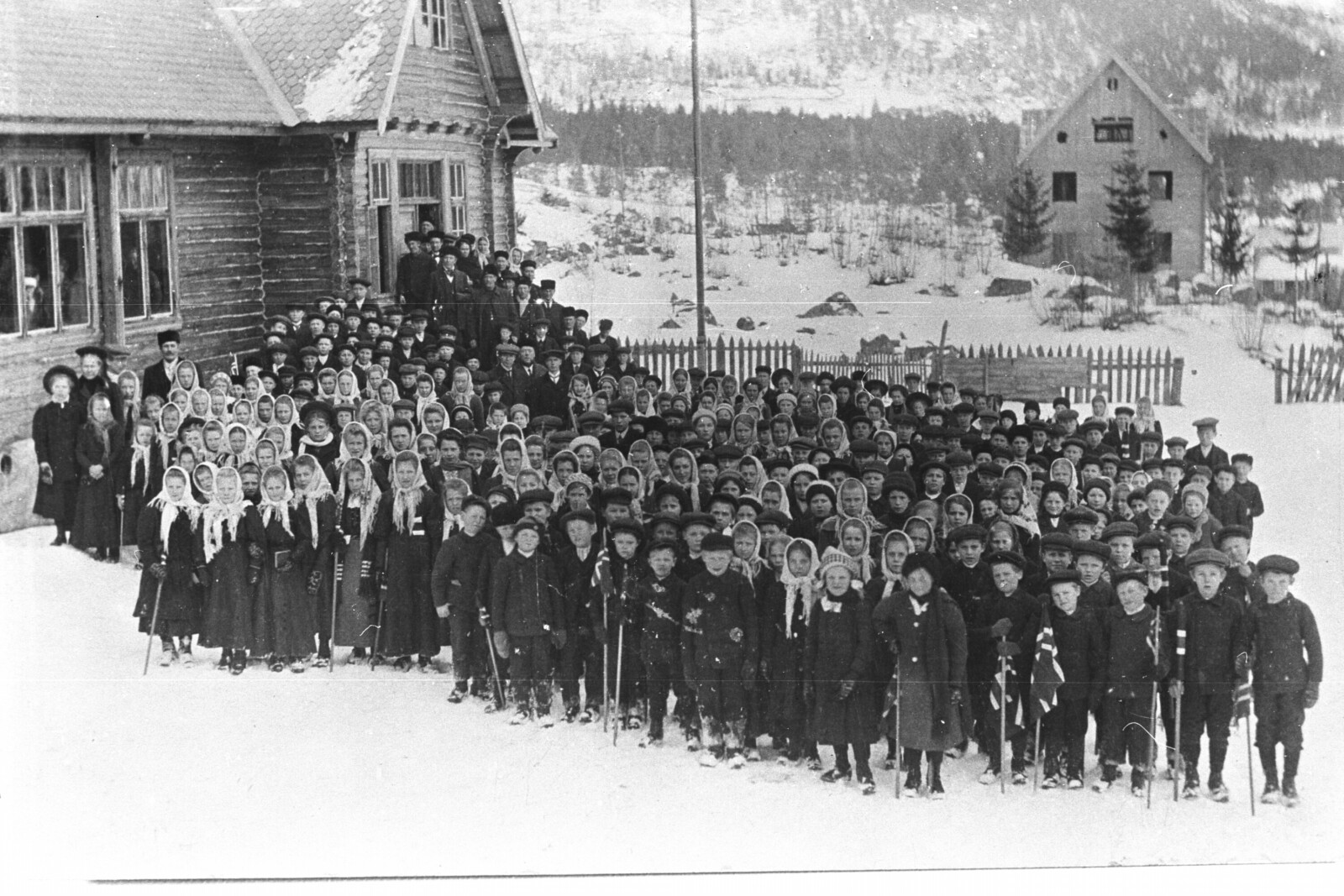La tankene vandre tilbake til en svunnen tid – ved Heslabrua i sentrum, finner du også et opplysningskilt om Historisk Vandrerute. Du kommer innom flere historiske bygninger og steder på turen. Besøk Hesla Farm som tar deg med på en historisk reise tilbake til 1537.
DOKTORGÅRDEN
Doktorgården, også kalt for Heslagammeln står på Hesla gård og ble satt opp av Ola Aselson Hesla en gang mellom 1830 og 1899. Huset ble leid bort til den første kommunelegen i Gol i 1903, Halfdan Peterson Sundt. Derfra kommer navnet Doktorgården. Bygget ble senere også kalt Wang. Gol Sykehus ble bygd like ved rundt 1905.
Doktorgården, also known as Heslagammeln, is located on Hesla farm and was constructed by Ola Aselson Hesla sometime between 1830 and 1899. The house was rented out to the first municipal doctor in Gol in 1903, Halfdan Peterson Sundt. This is where the name Doktorgården comes from. The building was later also called Wang. Gol Hospital was built nearby around 1905..
HESLA GÅRD
Hesla Gård har lenge vært en stor gård i Gol, og ble nevnt i historiske kilder i 1528, og er trolig enda eldre. Navnet Hesla kommer fra ordet hesli, som refererer til hasseltrær. Familien Hesla har drevet denne gården siden 1738, og i 1923 åpnet familien vertshus på gården for dem som reiste gjennom Hallingdal. I dag er gården et historisk overnattingssted.
Hesla Farm is a large historic farm in Gol and was first mentioned in historical texts in 1528. The farm is probably much older, however. The name Hesla refers to the hazel trees that grow there. The family Hesla has run the farm since 1738, and in 1923 the family opened up an inn at the farm, lodging those who travelled through Hallingdal. Today the farm is a historic guest house.
VONHEIM
Gol Ungdomslag ble dannet i 1892, og i 1907 ønsket de sitt eget samlingshus. Ungdomslaget kjøpte derfor et gammelt hus, som ble kalt Vonheim. Dessverre brant bygget ned allerede i 1910, men det ble straks satt opp et nytt og nye Vonheim sto klart i 1912, Bygget har blitt påbygd flere ganger etter dette.
Den gamle tingstugu i Gol ble bygget mellom 1857 og 1860, og sto opprinnelig i nærheten av Gol Kirke i Golreppen. En tingstugu ble blant annet brukt som rettslokale, og tingstugu i Gol ble også brukt som snekkerskole og amtskole. I 1911 skulle Tingstugu flyttes fra Golreppen ned til Gol sentrum, hvor den ble delvis oppbygd før uenigheter førte til at hele bygget ble flyttet ut av Gol. I stedet ble en ny tingstugu bygget i 1913, på tomten hvor den står i dag.
The old courthouse in Gol was built between 1857 and 1860, and was originally located near Gol Church. The courthouse was also used as a local school for periods of time. The courthouse was moved to the centre of Gol in 1911 but did not stay there long before it was taken down and moved out of Hallingdal. A new courthouse was built in 1913, which is the building you see today.
GOL BYGDEMUSEUM
Gol Bygdemuseum er bygget opp rundt den gamle gården Skaga, og har flere laftede tømmerbygninger. Det gamle gårdstunet Skaga ble gjort om til museum i 1958, og senere ble flere bygg flyttet til museet. De fleste byggene er fra 1800-tallet, men det eldste er fra midten av 1700-tallet. Museet ligger vakkert til i dalsiden over Gol sentrum, i nærheten av stavkirketomten og Gol Kirke. Gol Bygdemuseum som er åpent fra 8. juli til 8. august, på mandager, tirsdager og torsdager.
The museum in Gol consists of the old farm Skaga, as well as several buildings that have been moved there at a later date. The buildings are made from locally sourced timber. The old farm Skaga was made into an outdoor museum in 1958. Most of the buildings are farmhouses from the 1800s, although the oldest is from the mid-1700s. The museum is situated in the sloping hills with a beautiful view of Gol, near Gol Church.
GOL KIRKE OG STAVKIRKEN
Den gamle stavkirken i Gol ble bygd en gang på 1200-tallet, og er en av kun 28 stavkirker som står igjen i Norge i dag. Den sto opprinnelig på det som i dag kalles Stavkirketomten. I 1851 ble det vedtatt en ny lov i Norge, som dikterte at kirken i bygden skulle være stor nok til å romme 3/10 av innbyggerne, og dermed var Gol stavkirke for gammel og for liten. Da det ble bygget en ny kirke på 1880-tallet, ble den gamle stavkirken flyttet til Norsk Folkemuseum i Oslo.
The old stave church in Gol was built sometime in the 1200s, and is one of only 28 remaining stave churches in Norway. It was originally located near the modern church, before being moved to Norsk Folkemuseum in Oslo. The old stave church was considered too old and small for the population in Gol at the end of the 1800s, and therefore a new church was built nearby in the 1880s.
MYKLEFOSS KRAFTVERK
Myklefoss Kraftverk ligger ved elven Hemsil, som renner gjennom Hemsedal og Gol. Kraftverket ble bygget i 1913, rundt samme tid som Gol Elektriske Mølle. Kraftverket sørget for elektrisk lys til flere hus i området, og ga kraft til møllen.
The power plant at Myklefoss is located by the river Hemsil, which runs through Hemsedal and Gol. The power plant was built in 1913, around the same time as the construction of the Gol electric mill. Many houses in the area received their electricity from this plant, and it also powered the mill.
Se turen på ut.no
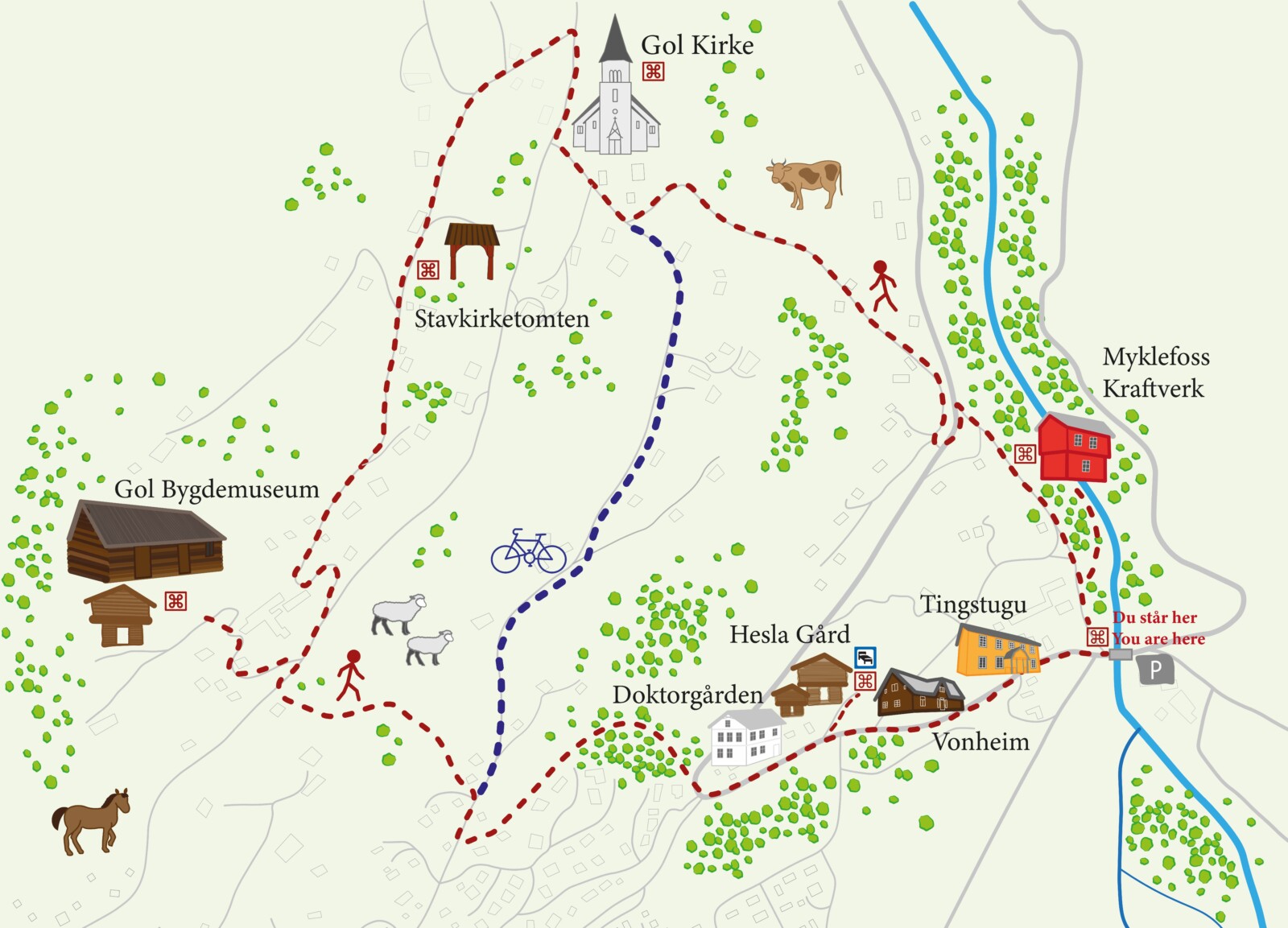
Se turen på ut.no
Se turen på ut.no


